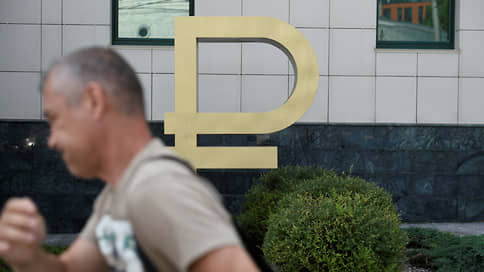What are financiers’ forecasts regarding the ruble exchange rate?
[ad_1]

Economists argued about the future of the ruble exchange rate. The national currency has remained stable for several months in a row. Nevertheless, the Central Bank recorded a sharp increase in demand for dollars and euros. If in February 2024 the population spent 100 billion rubles for these purposes, then in March the figure jumped one and a half times, to 155 billion rubles. “Kommersant FM” talked to market participants and found out how they explain this trend and how profitable it is to invest in currency now.
Director of the analytical department of the investment company Region, Valery Weisberg, considers the increased demand for currency to be temporary: “This is unlikely to be some kind of trend. Russians, who now spend most of their time abroad, periodically top up their foreign accounts. There are such surges, including in past months they occurred. If we talk about March, there were two points of nervousness in the market: around the elections and when the terrorist attack happened in Crocus City Hall. Accordingly, I think that this panic attack could have caused some additional demand for currency. That is, these are largely eventful purchases, and it is unlikely that we will see them repeated in the near future.
Now the volatility of the exchange rate is extremely low, its level probably corresponds to the first months of 2022. In principle, I don’t see any incentives for the ruble to depreciate significantly. I think there will be fluctuations around the current values.”
However, some Kommersant FM interlocutors believe that there are grounds for a possible devaluation of the national currency. In April, the decree on the mandatory sale of foreign currency earnings formally expires, which orders 43 companies to return foreign currency to the country and sell it on the domestic market. The mechanism appeared in the fall of 2023, when the dollar began to cost more than 100 rubles. on the Moscow Exchange.
The Ministry of Finance proposed to extend the validity of the decree because it turned out to be effective. The Central Bank opposed it, saying that the exchange rate strengthened due to high interest rates, and exporters did not influence it. The final decision must be made by the president. But even if the decree is extended, other factors may put pressure on the ruble, noted stock market expert at BCS World of Investments Evgeniy Mironyuk:
“Trade turnover may decline. The main product that Russia sells abroad is, of course, oil. As part of OPEC’s obligations, exports are decreasing; we are already seeing a decrease in the volumes of both exports and imports. Thus, less foreign exchange earnings will flow into the country, and this is unfavorable for the ruble in the long term. And let’s not forget that the head of the Central Bank, Elvira Nabiullina, made a statement that a decrease in inflation rates will allow the key rate to be lowered, and easing monetary policy is always a minus for the ruble. We forecast an exchange rate of 92.1 rubles at the end of the second quarter. per dollar; at the end of the third – 92.9 rubles. and at the end of the fourth – 94.1 rubles.”
SberCIB also revised the exchange rate forecast for this year. Previously, analysts were confident that the dollar would continue to trade around 90 rubles. Now they write that a potential lack of supply and high demand will increase quotes to 95 rubles. for a dollar. But investment strategist at the Arikapital management company, Sergei Suverov, considers this scenario optimistic:
“Russian citizens are increasing their purchases of foreign currency, but the same can be said about almost all investment instruments. Investments in stocks and bonds, including gold, are increasing. This is due to rising incomes and wages. Another important factor is that many expect a serious weakening of the ruble in the second half of the year, citing a time frame after the presidential elections. Few Russians believe in the stability of the exchange rate.
There are now fundamental reasons for the weakening of the ruble, in particular, due to secondary sanctions, settlements on export transactions have become more complicated in banks of friendly countries.
The Central Bank states that in February the volume of sales of export foreign exchange earnings decreased by 20%. In fact, movements in the exchange rate should already occur, but the ruble is helped by high oil. Brent costs $90 per barrel, Urals also rose. This will compensate for the negativity that has accumulated in relation to the national currency. But I think that in the third quarter a weakening trend for the ruble will emerge. There is an opinion on the market that the ruble exchange rate may decrease by the end of the year by about 100 rubles. for a dollar.”
Officially, the Ministry of Economic Development predicts that the average dollar exchange rate this year will be about 90 rubles. The head of the Central Bank, Elvira Nabiullina, noted that she would not additionally target the value of currencies on the Russian market. The regulator deals with price issues, and “the rate will be what it should be so that it is consistent with the inflation target of around 4%,” she said.
Everything is clear with us – Telegram channel “Kommersant FM”.
[ad_2]
Source link






